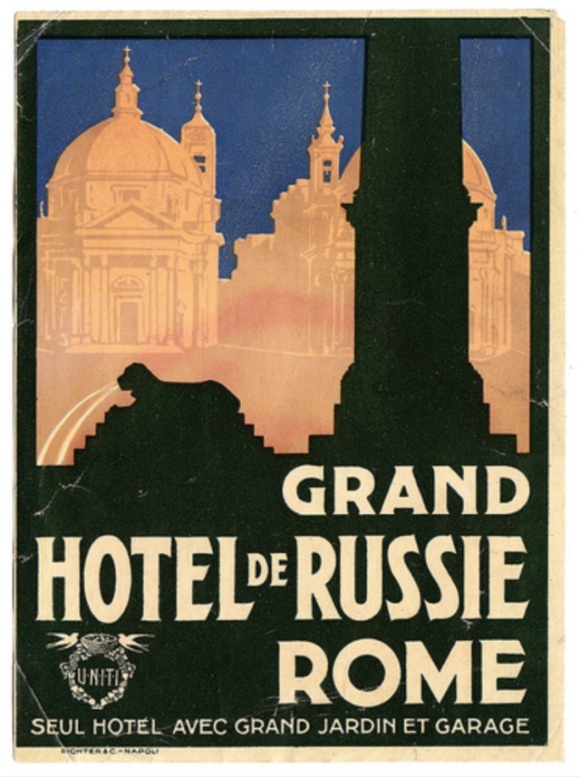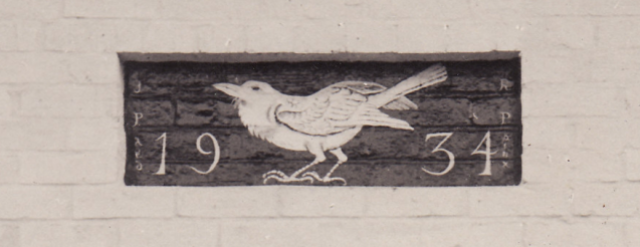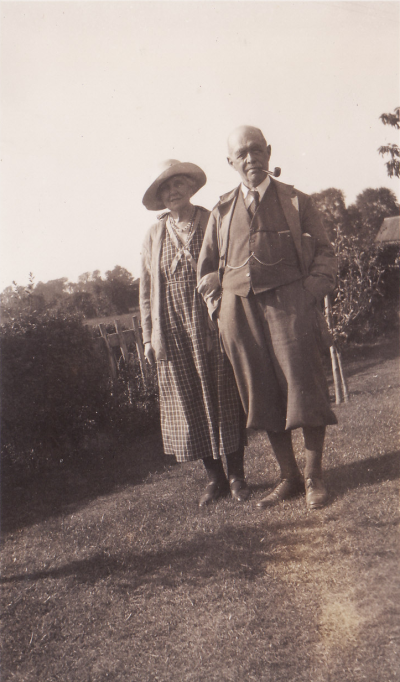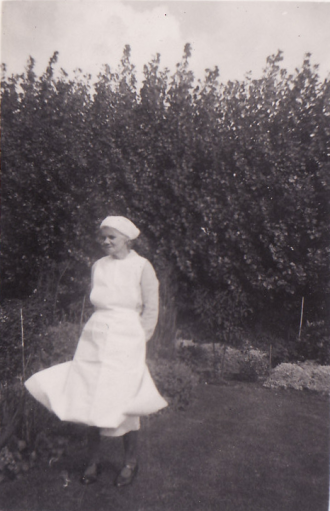Calderonia is an experiment in biography through a blog. It tells the story of George and Kittie Calderon’s lives from 30 July 1914 to 30 July 1915 from day to day as it happened, but exactly 100 years afterwards. It therefore feels like a biography in real time. When no facts were known for a particular day, the author posted on subjects ranging from the Edwardians, recently published biographies and his own problems as a biographer, to translating Chekhov and the Commemoration of World War I.
The blog-biography can be accessed in various ways. To read it from the beginning, go to the top of the column on the right and click the appropriate link. You can then read forward in time by clicking the link at the end of each post. If you wish to start at a particular month, scroll down the column on the right to Archive at the bottom. Posts can also be selected through Search Calderonia and the Tags on the right. An update on the complete biography of George Calderon always follows this introduction.
17/2/16. The weekly digests of events in World War 1 keep coming in from The Times, every day the media run items and features connected with it, the public debate about commemorating the fallen continues. Although I left the field of battle, as it were, on 7 June 1915, there is no chance of getting away from the War. It gets to you…
I have no desire to revive the debate about commemoration, ‘making peace with the Great War’, empathy/sentimentality, ‘war porn’, historicisation etc — new visitors can see from Recent Comments, the archive of ‘Watch this Space’, and a search on ‘Commemoration’, how much we thrashed these subjects out last year, and that by December some of us felt we had said our last word. But with the Battle of Loos and the collapse of the Russians’ Polish front last autumn, the evacuation from Gallipoli last month, the battle for Verdun this month, and the Somme coming soon, one inevitably continues to mull issues. Perhaps since December some followers have acquired new angles on previous themes. Personally, I want to address only a small poetical matter, but I know it ‘ramifies’.
It’s common knowledge that line 13 of Laurence Binyon’s ‘For the Fallen’ is often recited as ‘They shall not grow old’, when it should be ‘They shall grow not old’. Is this done through mere forgetfulness or ignorance? I don’t think so.
If, as is natural, we assume that the words are expressing a plain negative, namely that the fallen, being dead, will not grow old, then we would expect the metrical, iambic stress to be on the negating word ‘not’: ‘They shall not grow old…’ In terms of subject and predicate, we could represent this as: ‘They shall not (grow old).’ However, that is not what Binyon has written. In his version the metrical stress is on ‘grow’: ‘They shall grow not old…’ The half-line therefore rises appropriately on ‘grow’. Grammatically, this might appear to be just an archaic inverted negative. But actually it makes ‘not’ an unstressed syllable, produces a slight pause after ‘grow’, and could be represented structurally as: ‘They shall grow (not old).’ In other words the movement of the line is towards making ‘not’ qualify ‘old’ rather than qualify ‘grow’. Growing into a state of not-oldness sounds odd, and I would suggest that it is this apparent non sequitur that causes readers to stumble and ‘correct’ the line to ‘They shall not grow old’.
However, if you read the line as Binyon wrote it, it seems to me inevitable that you visualise the fallen as growing into an affirmative new state of being ‘not-old’, and that this is what the poet intended. What could this state be? Well, transfiguration, immortality, glory. Glory is a very tricky word today, debased and even pejorative. I note that it is given fifteen different meanings in The Chambers Dictionary, ranging from ‘renown’ and ‘triumphant honour’ to ‘boastful or self-congratulatory spirit’ and ‘presence of God’. But the ‘not-old’ state of the fallen in Binyon’s poem reminds me of nothing so much as the lines from Henry Vaughan’s poem ‘They are all gone into the world of light’:
I see them walking in an air of glory,
Whose light doth trample on my days:
My days, which are at best but dull and hoary,
Mere glimmering and decays.
Most of Binyon’s poem is concrete and fastidious; but in ‘They shall grow not old’ I feel it approaches the transcendent dimension of Wilfred Owen’s ‘Greater Love’. The soldiers’ act of supreme love, namely their ‘ultimate sacrifice’ for others, has removed them to that place of transfiguration where ‘you may touch them not’ (Owen). By comparison, ‘we that are left’ live out days that are ‘but dull and hoary’, in Vaughan’s words.
Given that ‘For the Fallen’ is the most famous war poem in the English language, it is difficult to believe that this point has not been discussed, and analysed better than I can, many times before. However, I cannot find any discussion of it on the Web.
By contrast, you will find plenty of discussion on the Web of the second half of Wilfred Owen’s poem ‘Dulce et decorum est’, about a gas attack, and specifically of the line ‘His hanging face, like a devil’s sick of sin’. This discussion was possibly triggered by Seamus Heaney asking his students at Queen’s University whether the poem wasn’t ‘over-written’, ‘artistically bad’, and the lines in which ‘devil’s sick’ occurs weren’t ‘a bit insistent’, ‘a bit explicit’ (see his The Government of the Tongue, Faber & Faber, pp. xiv-xvi). Heaney seems to focus this into a conflict between ‘truth’ and ‘beauty’, ‘life’ and ‘art’, although his final take on the matter seems ambiguous; some might say specious.
The reason, in my view, that Owen’s words here are ‘over the top’ (‘If you could hear, at every jolt, the blood/Come gargling from the froth-corrupted lungs,/Obscene as cancer, bitter as the cud/Of vile, incurable sores on innocent tongues’) is that his reaction is naturally to use the strongest words he can find, this backfires on him, yet ultimately produces an incoherence that perfectly enacts his horror.
If you have read as many personal accounts of WW1 warfare as I have in the past year (Ypres and Gallipoli), you too become incoherent if you try to express your reaction to the horror and degradation of it. I cannot think that there has been another war in which the human savagery and sheer filth have reached these depths. We have to accept, which I think Heaney never really did, that ‘devil’s sick of sin’ etc is not an iota too strong for it.
The poles of our World War 1 poetry are ‘devil’s sick’ and ‘glory’. We are rightly being overwhelmed by the former in these anniversary years, but we must never forget the latter either. Apparently it was Lloyd George who proposed the words ‘The Glorious Dead’ on the sides of Lutyens’s Cenotaph. If so, he was a genius, but so many contemporaries were involved in the post-war memorialisation that I expect it was really a consensus. There is no ‘To’ in it, just the three words, as if to mean ‘This says all we can about them’. It is an age removed from Rupert Brooke’s understandably tawdry line of autumn 1914 ‘Blow out, you bugles, over the rich Dead!’. After our protracted, ‘wordy’ discussions of Commemoration last year, a follower of Calderonia emailed me that it was all very interesting but ‘The Glorious Dead’ remained; that was in a way all that could be said…
‘Lapidary verse’ is an interesting, classical art (Philip Larkin and Ted Hughes produced notable inscriptions for the Queen’s Silver Jubilee), and perhaps this recent anonymous example drives at what I have been trying to say:
EPITAPH
Their uniforms of shit
their lives of shit
their deaths of shit
we live.
What means forget
THE GLORIOUS DEAD?
I should inform new visitors to the blog that Laurence Binyon was a lifetime friend of George Calderon’s and wrote an ode In Memory of George Calderon whose last verse bears a resemblance to the final lines of ‘For the Fallen’.
I am currently revising Chapter 6, ‘Russianist, Novelist, Cartoonist’, which at sixty-five printout-pages is by far the longest. It covers the years 1900-1905. I keep thinking I must split it, but it is really the backbone of the book, because it attempts to show from analysis of George’s essays and novels that he is a first-rate Russianist and a significant Edwardian writer… Unfortunately, following discoveries in the last year I have to add 500 words to it about George and Taoism. The research and evaluation have been done, but it’s still going to be difficult to know where to splice this subject in. I will then have edited/rewritten nearly half of the book.
This is the most recent ‘Watch this Space’ post. For the archive of ‘Watch this Space’, please click here.






























Watch this Space
Calderonia is an experiment in biography through a blog. It tells the story of George and Kittie Calderon’s lives from 30 July 1914 to 30 July 1915 from day to day as it happened, but exactly 100 years afterwards. It therefore feels like a biography in real time. When no facts were known for a particular day, the author posted on subjects ranging from the Edwardians, recently published biographies and his own problems as a biographer, to translating Chekhov and the Commemoration of World War I.
The blog-biography can be accessed in various ways. To read it from the beginning, go to the top of the column on the right and click the appropriate link. You can then read forward in time by clicking the link at the end of each post. If you wish to start at a particular month, scroll down the column on the right to Archive at the bottom. Posts can also be selected through Search Calderonia and the Tags on the right. An update on the complete biography of George Calderon always follows this introduction.
24/2/16. Local historians are the salt of the earth. They know their specialist area intimately and utterly. When the subjects of biographies settle for significant periods of time in different places, as George did at Eastcote, George and Kittie did at Hampstead, then Kittie did at Sheet and Kennington, without the help of local historians biographers would only scratch the surface of their lives in these places.
In the case of Eastcote, I was unbelievably lucky, because Karen Spink had already researched and published a terrific article about George’s time there (1898-1900) for the 1999 issue of the Journal of Ruislip, Northwood and Eastcote Local History Society (RNELHS). Karen twice walked me through the mile and a half of footpaths and road that George would have taken on his bicycle to get from his digs at Eastcote to catch the train at Pinner station on his way to the British Museum. She also showed me all over historic Eastcote and arranged for me to visit the private property where George lived. This is not to mention the endless sources she sent me about the life of Eastcote in those years. If my very large chapter two, ‘Eastcote Man’, has any deep texture apart from George’s love letters written from Eastcote to Kittie, it is entirely thanks to Karen, who also independently undertook to research the Calderons’ property in Hampstead.
Sheila Ayres of Camden History Society then helped Karen and me arrange a visit to two of the three private properties that once made up George and Kittie’s house in Hampstead. This was fascinating, as we had Kittie’s photograph album of 1902 to accompany us. The present owners were most welcoming and enthusiastic about the project.
My point about these wonderful local historians is not that they have spared me months and months of researching Eastcote and Hampstead that I would, of course, have been obliged to do myself, it is that I could never match their knowledge of these places and they have allowed me access to it with truly humbling generosity.
At Sheet in Hampshire a chance encounter led me to Vaughan Clarke, an historian who through his local contacts was able to confirm that the house I thought was where Kittie had lived 1922-34 was indeed ‘Kay’s Crib’ until its name was changed seventy years ago. Mr Clarke was also able to enlighten me about the social stratification of Sheet in the 1920s; this proved critical for working out why Kittie failed to ‘settle’ there. Mr Clarke is now Chairman of Petersfield Museum, which is well worth a visit. Each year the gallery of the museum exhibits a different selection of the painter Flora Twort (1893-1985), whom Kittie probably knew and who moved from Hampstead to Petersfield before her.
I have visited Kennington several times, and four years ago I placed appeals in local papers for anyone who still remembered Kittie to contact me (no-one did). For my last chapter, completed a month ago, I needed to get a feel for — to know as much as possible about –the life going on in Kennington outside Kittie’s windows at ‘White Raven’, where she lived from 1934 to 1948. I had over a hundred letters that she received in that period, about a dozen of her own, and many documents, but I needed as much context as possible. Here, the Ashford Archaeological and Historical Society have come to the rescue. Not only have they put feelers out amongst the senior population of Kennington, they are writing a piece about Kittie themselves for the Kentish Express. Amongst other things, this may settle the question of whether, as I think, The Cherry Orchard in George’s translation was performed at Ashford in 1940/41 as part of a campaign to raise money for the war effort.
But above all, Robin Britcher, a member of the Ashford Archaeological and Historical Society, has spent ten years researching life at Kennington during World War 2, the result of which is this superb little book, published last month:
This book has provided absolutely critical local context to Kittie’s and Elizabeth’s lives at ‘White Raven’ during the war. Kittie wrote to Percy Lubbock in Montreux about every ten days and it is possible she mentioned to him some of the drama that was going on around her at Kennington, but maybe wartime censorship prevented her, and in any case her letters have not survived. Without Robin Britcher’s book, then, I would never have known that Kittie’s next-door neighbours were interned as enemy aliens, their house became a military nerve centre, a Heinkel bomber came down only a few hundred yards from ‘White Raven’, seventeen residents of Kennington died on active service, and nine bombs were dropped on the village killing two people, injuring others and wrecking homes. Kittie’s polite refusal of offers to accommodate her for the duration in places as far afield as Fife and Pittsburgh, Pennsylvania, takes on an even grittier edge.
However, Robin Britcher’s book is not only a portrait of Kennington during the war, it is an in-depth portrait of the village’s life as such: there is so much in it about the workings and personalities of the village that its usefulness for me extends beyond the war years. It is also very attractively presented, with masses of illustrations and an extremely well written text. I warmly recommend it. It can be bought directly from Mr Britcher at 169 Faversham Road, Kennington, Ashford, Kent TN24 9AE, by sending a cheque for £6.50 (includes postage and packing) made out to Robin Britcher.
I cannot help thinking that this country may have the best local historians in the world.
By the end of this week I shall have revised/rewritten about 58% of my biography of George. I have ‘lost’ a week because of the need to write a few new sections, particularly in the light of the sensational discovery last year of George’s pocket diary for 1907 — the only diary of his known.
This is the most recent ‘Watch this Space’ post. For the archive of ‘Watch this Space’, please click here.